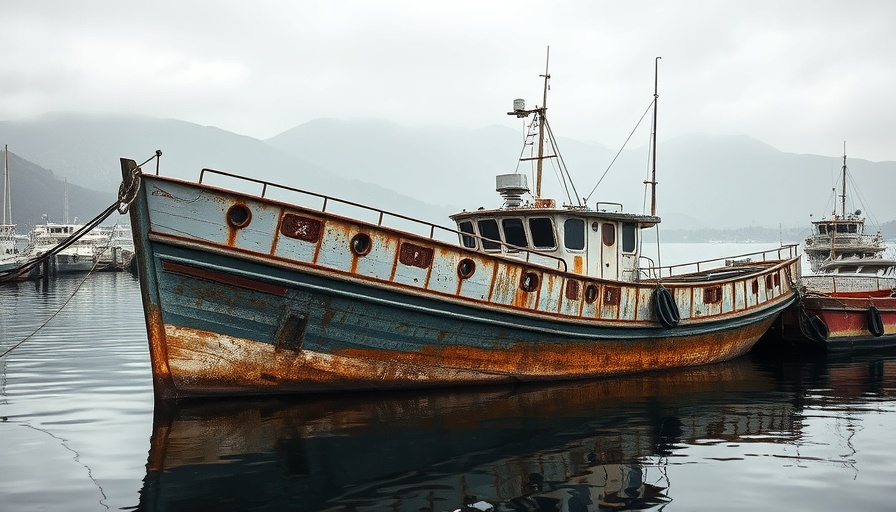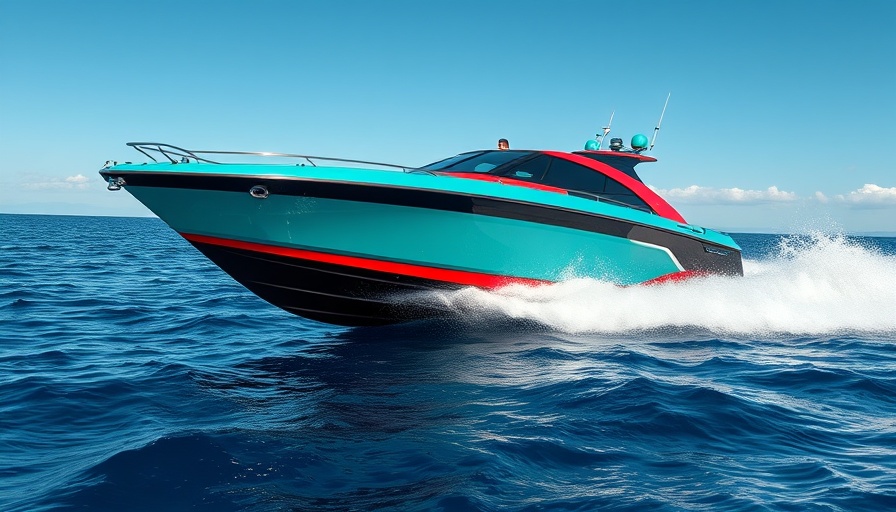
The Tragic Sinking of the Cape Douglas: Key Insights
The recent National Transportation Safety Board (NTSB) report highlights the tragic sinking of the 80-year-old fish tender, Cape Douglas, in Chiniak Bay, Alaska. Originally built in 1944, this vessel's demise was attributed to several operational oversights that culminated in its flooding and ultimate loss. As the vessel was en route to dispose of fish byproducts, the crew faced a situation that escalated rapidly, culminating in their successful abandonment of the sinking ship thanks to the swift actions of a Good Samaritan.
Understanding the Technical Failures
Analysis from the NTSB indicates that the cause of the flooding was likely rooted in a failure of the deck washdown system. The system, which had not been tested or maintained for at least two years, showed visual signs of rust and deterioration. The captain noticed flooding only after opening the inlet valve, but by then, the situation quickly spiraled out of control due to the antiquated and poorly maintained systems onboard. Such failures underscore the importance of regular maintenance and testing of equipment, especially for older vessels like the Cape Douglas, where age and wear can significantly compromise safety.
The Importance of Watertight Integrity
A critical takeaway from the incident involves the significance of maintaining watertight integrity on vessels. According to the NTSB, had the watertight doors been secured, the flooding could potentially have been contained. The report stressed that watertight bulkheads and doors play a vital role in preventing water from spreading throughout the ship should leaks occur. This incident has sparked discussions within the maritime community about best practices for ensuring such integrity, emphasizing that safety protocols must be strictly adhered to, especially in older vessels.
Local Concerns and Regulatory Implications
The sinking of the Cape Douglas has not only raised safety concerns but also highlighted regulatory issues around older vessels operating in busy waters. Just a few months before the incident, concerns about the Cape Douglas's condition were brought to light by the City of Kodiak harbormaster, reflecting a growing tension between operational longevity and safety standards in maritime regulations. Such instances provoke crucial inquiries into how many more older vessels still operate under potentially unsafe conditions across the American waterways.
Future Trends in Vessel Maintenance and Safety
This incident calls for a reevaluation of practices concerning the inspection and maintenance of aging vessels. Modern technology offers solutions such as automated monitoring systems that would allow for real-time assessments of vessel integrity. Implementing regular and robust checks, along with incentives for maintaining and upgrading older equipment, could prevent unfortunate incidents like the Cape Douglas from reoccurring. As the industry moves forward, these preventative measures will be integral in ensuring the safety of crew members and preserving the marine ecosystem.
The Human Element: Lessons Learned
The story of the Cape Douglas serves as a powerful reminder of the human element in maritime operations. The quick thinking of the crew to abandon the vessel safely against an impending disaster illustrates both the risks they face daily and the knowledge required to operate safely. It also reminds us that behind every statistic of maritime loss, there are human stories, families, and communities that feel the repercussions of these events. Such reflections can help galvanize support for better safety practices and systems of accountability in the fishing and maritime industries.
In the wake of the Cape Douglas's sinking, it is clear that vigilance in maintenance, adherence to safety protocols, and innovative solutions to age-old problems are necessary to avert future maritime disasters. The bold actions taken by the crew amid crisis emphasizes the need for continuous training and awareness for all personnel operating on or near our waters.
 Add Row
Add Row  Add
Add 




Write A Comment